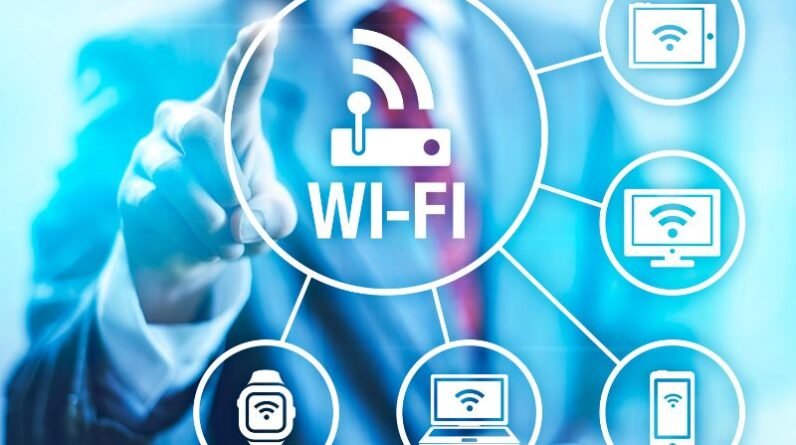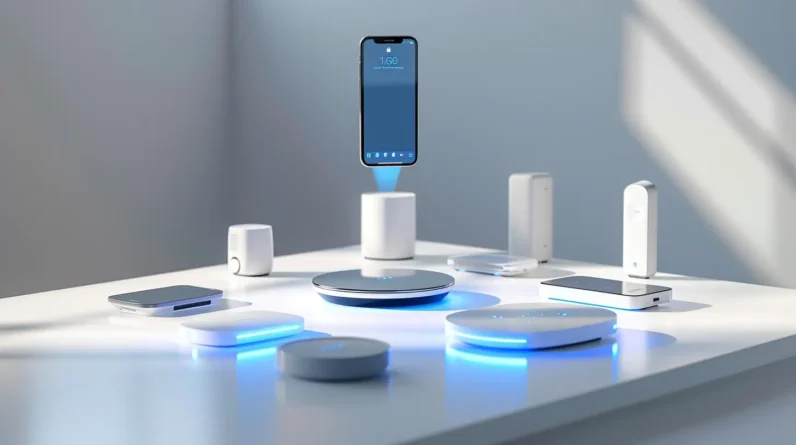
Imagine a world where your home anticipates your needs, keeps you safe and secure, and minimizes energy consumption without any effort on your part. This is the future of smart homes, fueled by emerging technologies and trends.
Voice-controlled virtual assistants, advanced security systems, Internet of Things (IoT) integration, energy efficiency measures, and enhanced home automation are transforming the way we live.
In this article, we will explore these exciting developments that promise to revolutionize our living spaces and provide us with unparalleled convenience and control.
Voice-Controlled Virtual Assistants
Voice-controlled virtual assistants have become increasingly popular in smart homes due to their ability to perform various tasks and provide convenient hands-free control. These virtual assistants, such as Amazon’s Alexa and Google Assistant, utilize natural language processing (NLP) technology to understand and respond to voice commands. NLP enables these virtual assistants to interpret human language, making interactions more intuitive for users.
One of the key advantages of voice-controlled virtual assistants is their ability to perform a wide range of tasks. Users can ask them questions, set timers or reminders, play music, control smart home devices, and even order products online. This versatility makes them an essential component of a modern smart home ecosystem.
However, the rise in popularity of voice-controlled virtual assistants has also raised privacy concerns. Since these devices are always listening for activation commands, there is a potential risk that they may unintentionally record private conversations or sensitive information. Technology companies have implemented measures such as wake word detection and encryption protocols to address these concerns; however, skepticism remains among some users regarding data privacy.
In conclusion, voice-controlled virtual assistants offer numerous benefits for smart homes by providing convenient hands-free control over various tasks. However, addressing privacy concerns will be vital for ensuring widespread adoption and maintaining user trust in this emerging technology.
Advanced Security Systems
Enhanced security systems in the realm of smart homes have become increasingly advanced, with the integration of biometric authentication and facial recognition technologies. These advancements offer a higher level of protection for homeowners, as they rely on unique physical characteristics that are difficult to replicate or forge. Biometric authentication involves using individual traits such as fingerprints or iris patterns to verify the identity of individuals accessing the smart home system. This method eliminates the need for traditional keys or passwords, reducing the risk of unauthorized access.
Facial recognition technology is another key component of advanced security systems in smart homes. It analyzes facial features to identify individuals and grant them access based on their pre-registered profiles. This technology has improved significantly over recent years, becoming more accurate and reliable.
The integration of biometric authentication and facial recognition technologies offers several benefits in terms of security for smart homes:
1. Enhanced Protection: By relying on unique physical characteristics, these technologies provide an added layer of security that is difficult to bypass.
2. Convenient Access: Homeowners no longer need to carry keys or remember complex passwords; their physical attributes serve as their identification.
3. Remote Monitoring: Some advanced security systems allow homeowners to remotely monitor their property using real-time video feeds and receive alerts if any suspicious activity is detected.
Overall, the integration of biometric authentication and facial recognition technologies into smart home security systems enhances both convenience and protection for homeowners.
Internet of Things (IoT) Integration
The integration of Internet of Things (IoT) technology allows for seamless connectivity and communication between various devices within a smart home ecosystem. This advancement has paved the way for the emergence of smart appliances, which are capable of connecting to the internet and interacting with other devices in order to enhance functionality and convenience.
Smart appliances, such as refrigerators, washing machines, and thermostats, can now be integrated into a larger network within a smart home. This enables users to control these appliances remotely through their smartphones or other connected devices. For example, one can adjust the temperature settings of their refrigerator or start a load of laundry while away from home.
Moreover, this connectivity allows for increased automation within the home. Smart appliances can communicate with each other to optimize energy usage and improve overall efficiency. For instance, a smart thermostat can detect when no one is present in a room and adjust the temperature accordingly, thereby reducing energy wastage.
In addition to convenience and efficiency benefits, IoT integration also brings about new possibilities for data analysis. By collecting data from various connected devices within a smart home system, valuable insights can be gained regarding energy consumption patterns or appliance usage trends. This information can then be used to make informed decisions on how to further optimize energy usage or improve device functionality.
Overall, the integration of IoT technology into smart homes offers numerous advantages in terms of convenience, efficiency, and data analysis capabilities. As more devices become interconnected within these ecosystems, we can expect even greater advancements in this area in the future.
Energy Efficiency and Sustainability
Energy efficiency and sustainability are key considerations in the integration of IoT technology within smart home ecosystems. As the world becomes more conscious of its environmental impact, homeowners are seeking ways to reduce their energy consumption and carbon footprint. This has led to an increased focus on incorporating renewable energy sources, such as solar power integration, into smart homes.
– Reduced Energy Consumption: Smart homes equipped with IoT devices can optimize energy usage by automatically adjusting temperature settings, lighting levels, and appliance usage based on occupancy and user preferences.
– Eco-Friendly Appliances: The integration of IoT technology allows for better monitoring and control of appliances’ energy consumption. Smart appliances can be programmed to operate during off-peak hours or when renewable energy sources, like solar power, are most abundant.
– Smart Grid Integration: By connecting smart homes to the larger electrical grid through IoT technology, homeowners can contribute excess renewable energy back to the grid. This not only reduces their own reliance on non-renewable resources but also supports a more sustainable energy system.
The incorporation of solar power integration and eco-friendly appliances in smart homes contributes to a more sustainable future. It empowers homeowners with greater control over their energy consumption while reducing their reliance on traditional fossil fuel-based electricity generation. As technology continues to advance, it is expected that further developments will be made in this field, making sustainable living even more accessible for everyone.
Enhanced Home Automation
One aspect of smart home ecosystems that is gaining traction is the integration of IoT technology to enable more efficient and convenient home automation. With the advancement of voice recognition technology, homeowners can now control various aspects of their homes simply by speaking commands. This eliminates the need for manual operation of appliances or devices, making daily tasks more streamlined and hassle-free.
Smart appliances are another key component of enhanced home automation. These appliances are equipped with sensors and connectivity features that allow them to communicate with other devices in the smart home ecosystem. For example, a smart refrigerator can send notifications to your smartphone when you are running low on certain groceries, enabling you to create a shopping list right from your phone. Similarly, smart thermostats can learn your temperature preferences and adjust accordingly, maximizing energy efficiency without sacrificing comfort.
The integration of voice recognition technology and smart appliances in home automation systems offers numerous benefits. It enhances convenience by allowing users to control their homes through simple voice commands, reducing the need for physical interaction with devices. Additionally, it promotes energy efficiency by optimizing appliance usage based on personal preferences and real-time data.
As these technologies continue to evolve and become more widespread, we can expect further advancements in enhanced home automation systems that will revolutionize our everyday lives.
Frequently Asked Questions (FAQs)
How do voice-controlled virtual assistants like Amazon Alexa or Google Assistant handle user privacy and data security?
Voice-controlled virtual assistants like Amazon Alexa and Google Assistant handle user privacy and data security by implementing encryption protocols, requiring user permissions for data access, and regularly updating their software to address security vulnerabilities. Privacy concerns and data security risks are a significant consideration in the development of these technologies.
Are there any limitations or challenges in implementing advanced security systems in smart homes?
Implementing advanced security systems in smart homes faces challenges due to limitations in interoperability, lack of industry standards, and potential vulnerabilities. According to a survey by Statista, 41% of consumers cite privacy concerns as a major obstacle.
How does IoT integration affect the overall convenience and functionality of a smart home?
IoT integration significantly impacts the overall convenience and functionality of a smart home. It enhances the user experience by enabling seamless connectivity between devices. However, it also poses challenges related to connectivity issues that need to be addressed for optimal performance.
What are some innovative ways that smart homes contribute to energy efficiency and sustainability?
By leveraging smart home automation and energy-efficient appliances, homeowners can significantly contribute to energy efficiency and sustainability. This innovative approach allows for optimal resource utilization, reducing environmental impact while providing the freedom to live in a technologically advanced and eco-friendly environment.
Can enhanced home automation systems be customized to suit individual preferences and lifestyle needs?
Enhanced home automation systems offer customization options that can be tailored to individual preferences and lifestyle needs. This allows for seamless integration of smart technologies into daily routines, enhancing convenience and personalization in the home environment.
Conclusion
In conclusion, the future of smart homes is promising, with emerging technologies and trends revolutionizing the way we live.
Voice-controlled virtual assistants have become increasingly popular, offering convenience and ease of use.
Advanced security systems provide enhanced safety and peace of mind for homeowners.
The integration of Internet of Things (IoT) allows for seamless connectivity between devices, creating a truly interconnected home.
Energy efficiency and sustainability are also key considerations, as smart homes aim to reduce environmental impact.
With enhanced home automation capabilities, the possibilities for smart homes are endless.
As the saying goes, ‘The future is bright for smart homes – where innovation meets comfort.’







